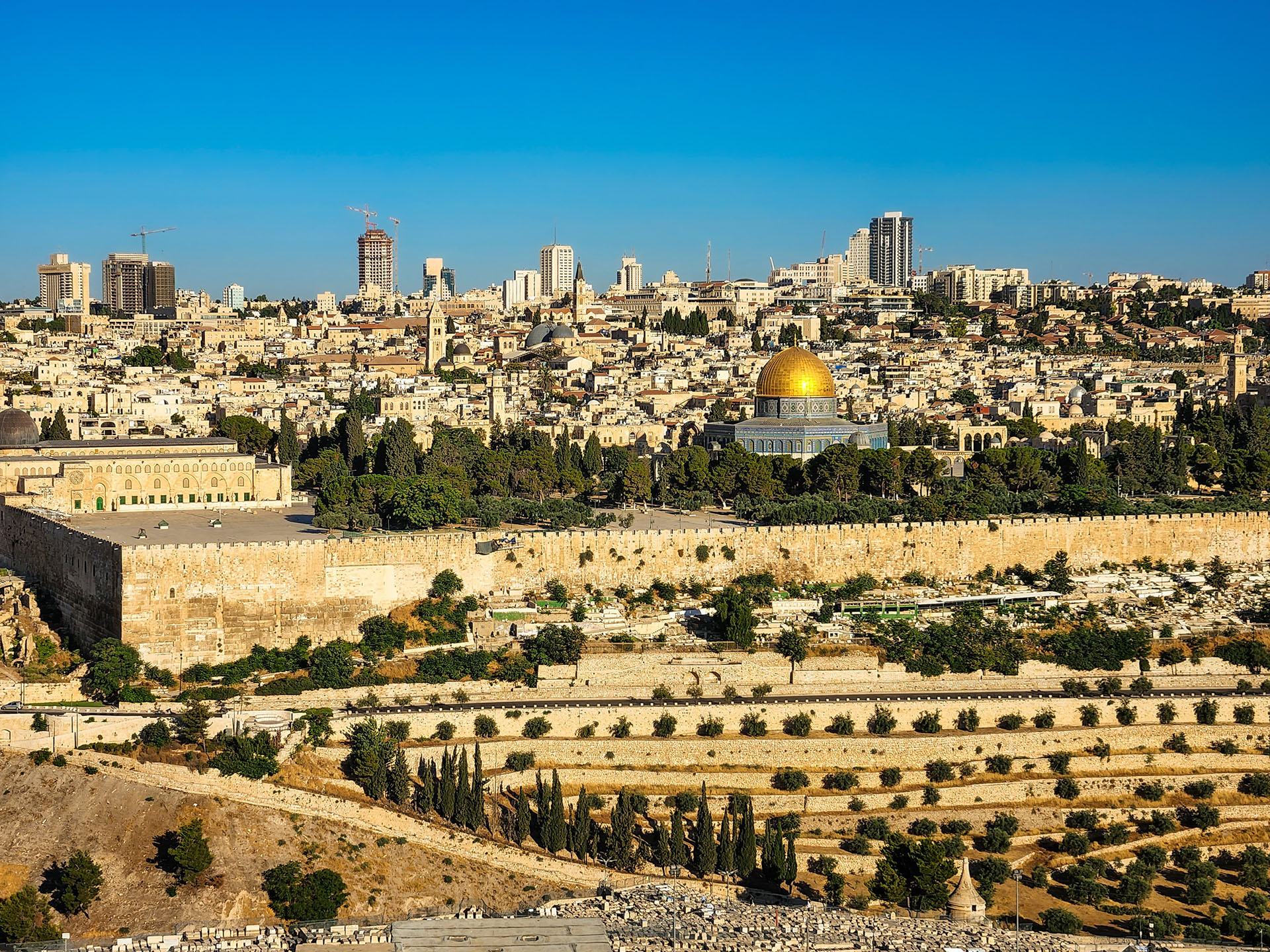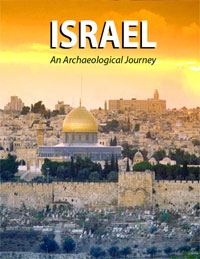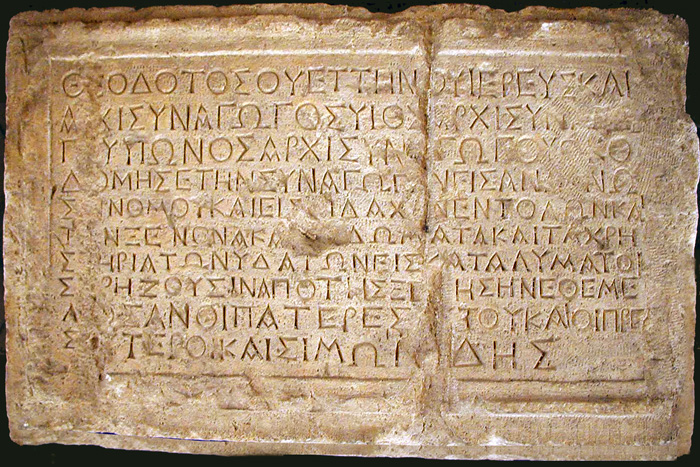
The Population of Jerusalem in Jesus’ Time. In the first century C.E., Jerusalem was home to diverse communities. Monuments, texts, and burials shed light on the city’s population. In this photo, taken from the Mt. of Olives, the Dome of the Rock, the ancient Temple Mount platform, and some burials are visible.
Photo: Courtesy Nathan Steinmeyer.
What was the population of Jerusalem in Jesus’ time?
Much as today, Jerusalem was a diverse city and pilgrimage center in the first century C.E. Many different people visited and called it home. In the Fall 2022 issue of Biblical Archaeology Review, Jodi Magness of the University of North Carolina at Chapel Hill reconstructs part of its population in her article, “Journey to Jerusalem: Pilgrims and Immigrants in the Time of Herod.” She analyzes ancient texts, monuments, and burials to illuminate some of the city’s Diaspora Jewish communities.

The Population of Jerusalem in Jesus’ Time
Before the destruction of the Second Temple in 70 C.E., Jerusalem was home to numerous Diaspora Jewish communities. Evidence of these communities abounds. Texts, such as the New Testament, Mishnah, and Josephus’ writings, help us reconstruct who they were. Additionally, burials and inscriptions serve as major sources for understanding the population of Jerusalem in Jesus’ time.
In her BAR article, Magness conducts a thorough investigation of texts and artifacts. Here, we highlight three of them:

Tomb of the Kings. Jerusalem’s so-called Tomb of the Kings is a first-century C.E. burial complex that likely entombed Queen Helena of Adiabene, who had converted to Judaism and moved from the kingdom of Adiabene (located in modern Kurdistan) to Jerusalem. This photo from 1890–1900 shows the complex’s courtyard and elaborate entrance. Photo: Library of Congress, Prints & Photographs Division, LC-DIG-ppmsca-02706.
(1) Tomb of the Kings. The so-called Tomb of the Kings is an elaborate first-century C.E. burial complex. With eight interior chambers and a grand entry porch, once topped with three pyramids, a large courtyard, staircase, and ritual bath, the Tomb of the Kings is one of the most impressive tombs in all of Jerusalem. Yet, despite its name, it served as the final resting place not for a king—but a queen. Queen Helena of Adiabene, who had converted to Judaism and moved from the kingdom of Adiabene (located in modern Kurdistan), was entombed in the complex.

(Left) Tomb of Nicanor. A large first-century tomb complex on Jerusalem’s Mt. Scopus contained an ossuary for Nicanor of Alexandria, a wealthy Jew from Alexandria, Egypt, who had famously donated two bronze gates to the Temple. The burial complex features a pillared entry porch (see remains of three pillars) and five burial chambers.
(Center) Burial Chamber. Inside one of the burial chambers, with replica ossuaries, of the Nicanor Cave complex on Mt. Scopus.
(Right) Burial Niche. Looking inside one of the burial niches, with a replica ossuary, within the Nicanor Cave complex on Mt. Scopus.
Photos: Courtesy Nathan Steinmeyer.
(2) Nicanor Burial Cave. A large tomb complex on Mt. Scopus sheds light on another Jerusalem pilgrim: Nicanor of Alexandria, a wealthy Jew from Alexandria, Egypt, who had famously donated two bronze gates to the Jerusalem Temple. This tomb also featured a courtyard, pillared entry porch, and five interior chambers. One of the chambers contained an ossuary (bone box) with an inscription identifying Nicanor.

Theodotos Inscription This stone block found in the City Of David is inscribed in Greek and commemorates a synagogue built by Theodotos son of Vettenos Photo: Courtesy user: תמרה, Attribution, via Wikimedia Commons
(3) Theodotos Inscription. A synagogue inscription from Jerusalem reveals that numerous pilgrims visited the city in the first century C.E. The inscription describes guest accommodations for sojourners at the synagogue itself. Theodotos, the head of the synagogue, and his father, Vettenos, are named in the inscription. The name Vettenos is Latin, which suggests that Theodotus’ family may have originated in Rome or Italy.
These tombs and synagogue inscription show that Jews traveled from diverse locations—from Mesopotamia, Egypt, and even Italy—to visit and sometimes move to Jerusalem. Other texts and artifacts highlight additional Jewish Diaspora communities and pilgrims amid the population of Jerusalem in Jesus’ time. Learn more about them in Jodi Magness’s article “Journey to Jerusalem: Pilgrims and Immigrants in the Time of Herod,” published in the Fall 2022 issue of Biblical Archaeology Review.
Read more in Bible History Daily:
Ancient Synagogues in Israel and the Diaspora
The Tomb of Queen Helena of Adiabene
Read more in the BAS Library:
The Exodus and Cultural Memory
Synagogues: Before and After the Roman Destruction of the Temple
The post The Population of Jerusalem in Jesus’ Time appeared first on Biblical Archaeology Society.


0 Commentaires